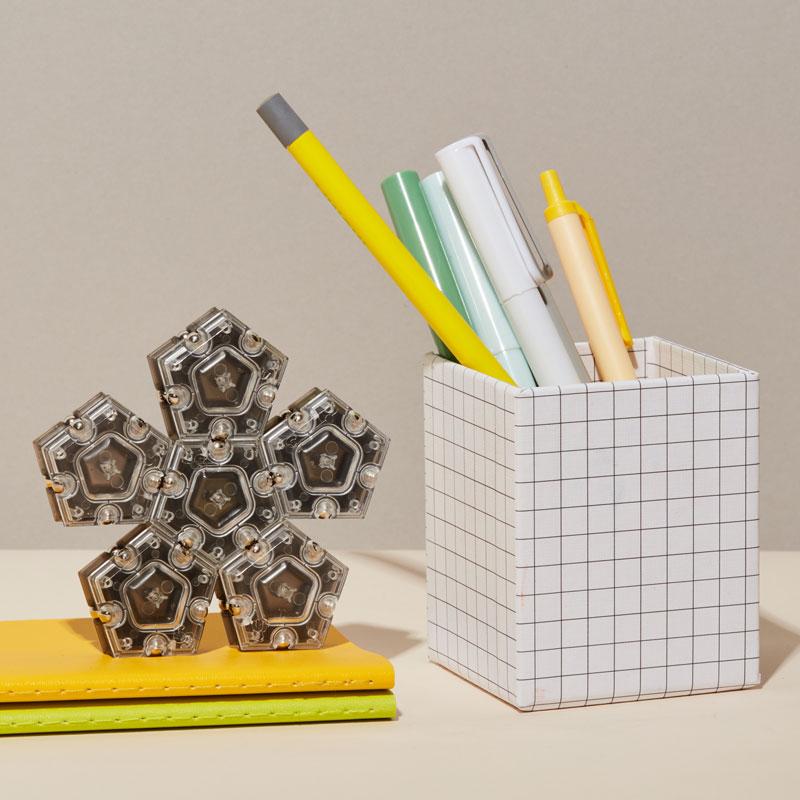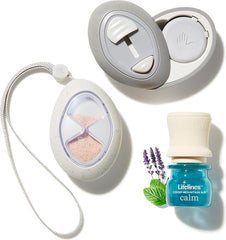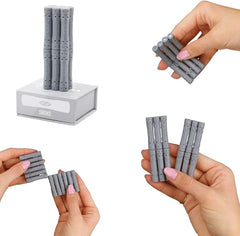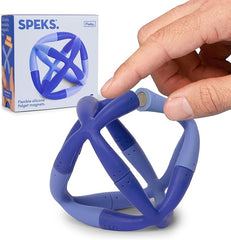
5 Ways Fidget Toys Help ADHD Brains Stay Focused and Calm
If you’ve ever been told to “just sit still and focus,” you know how frustrating that advice can be. For ADHD brains, movement isn’t a distraction—it’s a way to engage. Fidgeting is a natural self-regulation tool, and when used intentionally, it can help improve concentration, reduce stress, and even boost productivity.
But not all fidgeting is created equal. The key is finding the right fidget toy that works with your brain, not against it. Here’s how fidget toys can make a real difference in focus, learning, and overall well-being.
1. Fidgeting Helps ADHD Brains Process Information
ADHD brains thrive on movement. Research shows that small, repetitive motions—like clicking, spinning, or squishing—can improve cognitive performance by activating the brain’s executive functions. Fidget toys give your hands something to do, allowing your brain to engage more deeply in tasks like listening, reading, or problem-solving.

If you’ve ever caught yourself doodling in a meeting or tapping your foot while studying, you’ve already experienced this effect. A well-chosen fidget toy can channel that movement into something purposeful, keeping your hands busy so your mind can focus.
2. They Reduce Restlessness and Impulsivity
The urge to move isn’t a bad thing—but when it’s not directed, it can show up as leg bouncing, nail-biting, pen-clicking, or other habits that might annoy those around you. Fidget toys provide a structured way to release energy, preventing restlessness from becoming disruptive.
RELATED: How Fidget Toys Help ADHD Brains Stay Focused (Without the Distractions)
This is especially helpful in settings where movement is restricted, like classrooms, offices, or long meetings. Instead of trying to suppress the need to fidget, a small, quiet fidget toy can allow for discreet movement that enhances focus without drawing attention.
3. Fidget Toys Can Lower Stress and Anxiety
For many people with ADHD, fidgeting isn’t just about focus—it’s also a coping mechanism. Engaging in repetitive motion can help calm the nervous system, reducing feelings of anxiety and overwhelm.
Soft, textured, or squeezable fidgets (like stress balls or silicone poppers) can provide sensory feedback that grounds you in the present moment. This is especially useful for moments of overstimulation, when your brain feels like it’s running a mile a minute and you need a way to reset.
4. They Improve Task Completion and Productivity
It might sound counterintuitive, but fidgeting can actually make you more productive. ADHD brains struggle with task initiation and sustained attention, but adding movement can help bridge the gap between “I need to do this” and “I’m actually doing it.”
Using a fidget toy while working on a task can reduce mental resistance, making it easier to stay engaged. Some people find that keeping a small fidget nearby helps them push through boring or repetitive work without zoning out.
5. Fidgeting is a Tool, Not a Distraction
One of the biggest myths about fidget toys is that they take attention away from work. The reality? Intentional fidgeting supports focus—especially for ADHD brains. The problem isn’t fidgeting itself; it’s using the wrong kind of fidget.
RELATED: What Are Fidget Toys and How Do They Help ADHD Brains Stay Focused?
The key is choosing a fidget that keeps your hands busy without pulling your attention away. If a toy is too visually stimulating (like a spinner with flashing lights) or noisy (like a loud popper), it can become a distraction rather than a tool. The best fidgets are quiet, tactile, and repetitive, allowing you to engage in movement while still focusing on the task at hand.
Finding the Right Fidget Toy for You
Not all fidgets work the same for everyone. Some people need soft, textured fidgets for calming sensory input, while others benefit from resistance-based fidgets like stress balls. The key is to experiment and find what works best for your brain and your environment.
The bottom line? Fidgeting isn’t the enemy of focus—it’s the key to unlocking it. Instead of fighting the need to move, lean into it with the right tools. Check out our curated collection of Premium Fidget Toys for Adults with ADHD
Do you use a fidget toy? What works best for you? Let me know in the comments!



